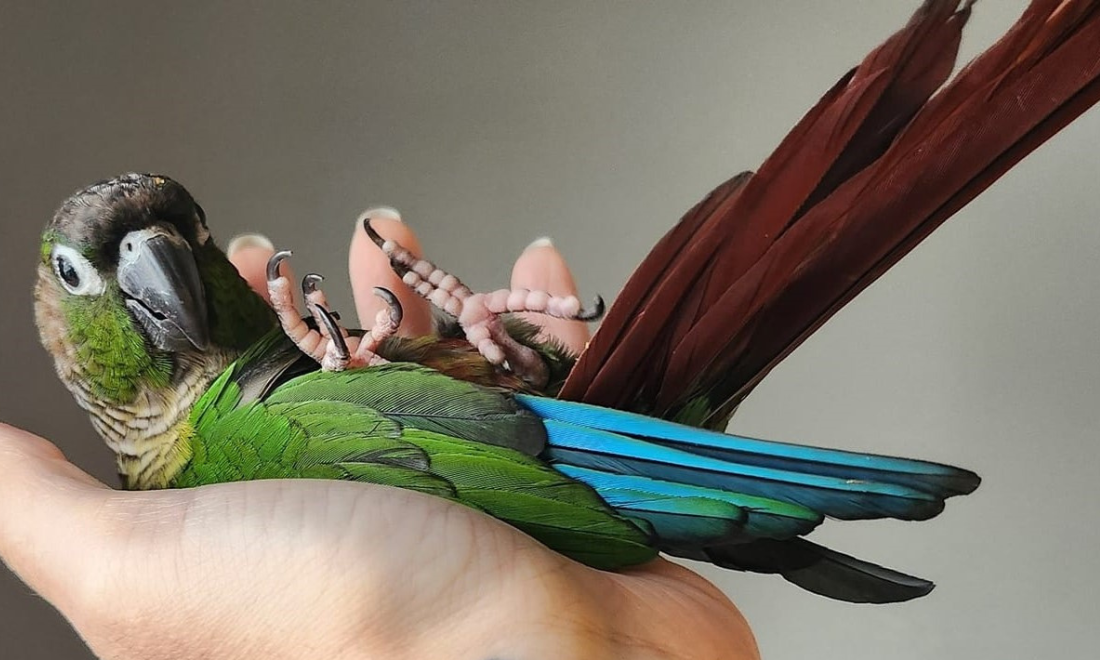Nonprofit Spotlight: St. Louis Avian Rescue (STAR)
Jill Capps, Executive Director of St. Louis Avian Rescue (STAR), didn’t quite know what to expect when one of the larger pet rescues in St. Louis reached out to her about a bird that was surrendered to their organization. “Mia was lunging, attacking, and was facing euthanasia because she wasn’t adoptable in that environment.” STAR was Mia’s last chance, so they acted quickly to find a foster home for the brightly colored bird.

Because STAR specializes in birds, they were able to identify the reason for Mia’s bad behavior. “She had an injury and couldn’t see out of one eye, so she was obviously freaked out when a hand suddenly appeared in her cage.” Once the problem was identified and the foster family knew to use verbal cues and approach Mia from different angles, she transformed. “There was no aggression, no anything. She is the sweetest little bird.” Last month Mia was adopted by a family STAR trained to understand her special needs, and Capps says today the little bird is living her best life.
Mia’s story demonstrates the importance of an organization like STAR that specializes in improving and enriching the lives of parrots through rescue, rehabilitative fostering, adoption, and then education. While STAR has taken in finches and canaries, their focus is on the various types of parrots. Capps explains that “a parrot is anything from a parakeet, like the little budgies you see at Petco in the bird section, up to cockatoos, macaws, and all the different parrots in between.”
She says many people aren’t prepared for the challenges of parrot ownership. “They’re incredibly complex creatures, and they require daily attention and care. They’re not a short-term commitment, with many species living multiple decades.” She points to the cockatiel perched on her shoulder, and says, “You know, this little guy here will live to be 30 or 40. He’s three now. A macaw has a literal human lifespan, which means there’s a real chance your grandchildren will inherit your bird.” They can also be messy and loud.
“If you think about it, [parrots are] a long-lived three-year-old who flies.” She’s experienced first-hand the challenges of parrot-proofing a home. “I had an African gray foster last month that would fly into the kitchen, hold on to one of the kitchen cabinets, and open the kitchen cabinet with his beak.”
Bird owners might be tempted to keep their pets caged, but Capps says this isn’t a good idea. Parrots are wild animals and need to fly. “In the wild, they fly miles every day as they move from tree-to-tree, so it’s really important in the home to try to give them some semblance of what they’re meant to do.” Part of STAR’s fostering process involves keeping birds out of cages and helping them socialize. By keeping a bird accustomed to humans, they can become part of the family.
She describes parrots as smart, silly, and capable of forming incredible bonds with their flock mates, which can include their human families. This can only happen if bird owners learn how to provide the appropriate attention, care, and enrichment this captive form of wildlife requires. STAR teaches a monthly 3-hour class at an area humane society, which donates the space to them. Fosters, volunteers, adopters, or prospective adopters are welcome to come as well. Capps explains that “it’s a bird care class to go over all the things you need to know to make sure a bird is happy and healthy and thriving.”
Because STAR emphasizes the importance of socializing their rescues, STAR volunteers take birds with them when they are invited to teach the public about the nonprofit at local outdoor events. The birds enjoy being outside, but precautions are required. She says, “We have harnessed train birds that go to events outside. We don’t clip their wings, so the harnesses keep the birds safe.”

If you’re interested in learning more about STAR and how you can help, you can find them on Instagram, Facebook, and TikTok @staravianrescue. “We’re always looking for fosters. We can’t help birds without fosters because we don’t house birds in a building. We place them in our individual homes because they need that care.” If fostering is more of a commitment than you’d like to make, there are other ways to help STAR. “Donations are necessary to support our foster program. We supply the cage, we cover medical costs, and we supply a ton of the supplies, like food, toys, etc.”
You can support STAR on May 9 during the St. Louis Community Foundation’s Give STL Day, which offers cash prizes to participating organizations throughout the 24-hour online event. Capps is grateful to their donors and events like Give STL Day because “fostering is so expensive, so we use those funds to take that burden off the foster families as much as possible.”
Without foster families and the other supporters of STAR, birds like Mia wouldn’t have a wing or a prayer.





